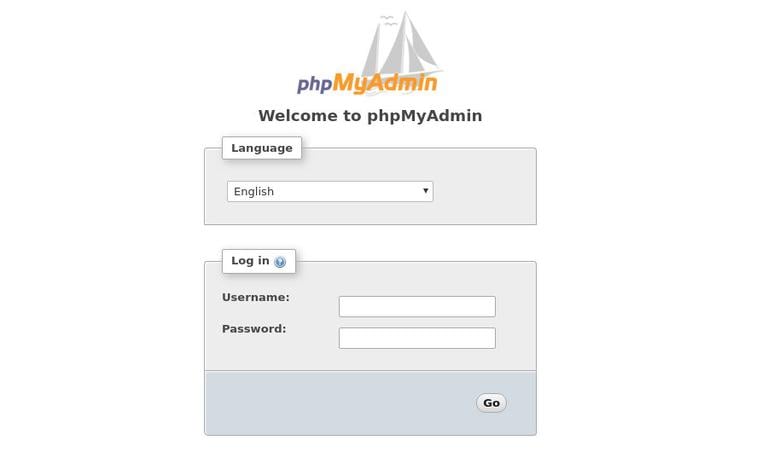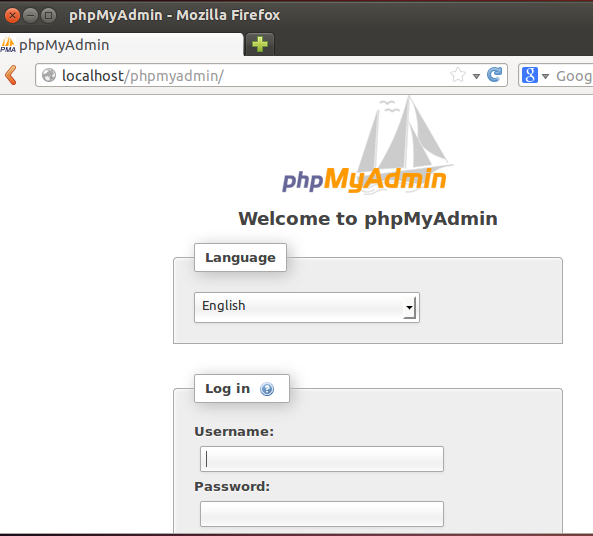

- #Launch phpmyadmin ubuntu install
- #Launch phpmyadmin ubuntu software
- #Launch phpmyadmin ubuntu password
This process adds phpmyadmin to /etc/apache2/conf-enabled/, you can verify it with: ls /etc/apache2/conf-enabled/Įnable PHP mcrypt and mbstring: sudo phpenmod mcrypt Pick Apache2 by pressing the Space key and hit Enter to continue. Then, you will need to select a web server.
#Launch phpmyadmin ubuntu install
However, you’ll have to run this command instead: sudo apt install phpmyadmin php-mbstring php-zip php-gd php-json php-curl.
#Launch phpmyadmin ubuntu password
Install phpmyadmin: sudo apt install phpmyadmin php-mbstring php-gettextĭuring the installation you will be asked to choose your web server (apache2) and if you want to use dbconfig-common to configure the db, finally the password for phpmyadmin will be requested. The steps to install phpMyAdmin on Ubuntu 20.04 are quite similar. Now go to and you should see something like the image below: Test if PHP works, create an info.php: sudo nano /var/www/html/info.php Restart Apache and check its status: sudo systemctl restart apache2Īfter this step if you want to install PHP modules, you can search for them using: apt-cache search php- | less Install PHP: sudo apt install php libapache2-mod-php php-mcrypt php-mysqlĮdit the file /etc/apache2/mods-enabled/dir.conf, after editing it should look like this:ĭirectoryIndex index.php index.html index.cgi index.xhtml index.htm Secure your MySQL installation executing: sudo mysql_secure_installationĬhoose the options that you prefer in this step. Install MySQL: sudo apt install mysql-serverĭuring this installation you will be asked to enter the MySQL password. Verify if Apache is working, open you browser and go to: you should see somehing like the following image: Restart Apache to implement changes: sudo systemctl restart apache2 The output should be like this: Syntax OK Now I access PHPMyadmin from a browser on any host.In Ubuntu 16.04.3 LTS you can follow these steps to install Apache2, MySQL, PHP7 and phpmyadmin, I tested this today and it shouln't give you any kind of problems, maybe you missed one of these steps, so please check them out:Įdit the file /etc/apache2/nf, add the following line at the end: ServerName Ĭheck if your config is OK: sudo apache2ctl configtest It will ask you to provide details for a PHPMyAdmin db and db user. sudo add-apt-repository ppa:phpmyadmin/ppa The following allowed me to install PHPMyAdmin. Step 3: Configure phpMyAdmin on Ubuntu Shortly the installation starts, the installer prompts to choose the web server to automatically configure.
#Launch phpmyadmin ubuntu software
Therefore, the common sudo apt install phpmyadmin will not work. sudo apt-get install phpmyadmin The system asks for confirmation press Y then Enter, and the system downloads and installs the phpMyAdmin software package.

It seems like the repository for PHPMyAdmin is missing in Ubuntu19.10 (as of today April 2020).

e.g., or Change MySql Bind in /etc/mysql//mysqld.cnf from 127.0.0.1 to 0.0.0.0 After making all the changes, make sure to start the Apache service to reload all settings. Create users and grant access for any host or a specific IP address. Then type :wq (colon+w+q) and hit Enter button.One has to resolve this requirement in 2 steps. This is good for standalone applciations, not for remote access. Typically the MySQL user one configures is for localhost (computer on which the db resides). I wanted to allow PHPMyadmin access from remote computers. If you still get errrors please check /etc/phpmyadmin/, e.g., I also grant access to phpmyadmin to avoid errors when you login to the PHPMyAdmin console. IDENTIFIED WITH mysql_native_password is something I needed for backward compatibility with PHPMyAdmin (below).GRANT ALL ON wp1.* TO ALL ON phpmyadmin.* TO $ sudo service mysql restart # I want my db user to access it from anywhere '%' as opposed to localhostĬREATE USER IDENTIFIED WITH mysql_native_password BY 'mywpPW'

#just Enter as tehre is no password when you installġ.I wanted to set up a WordPress website so needed a db and dbuser. sudo apt install tasksel & sudo tasksel #configure the GUI to select LAMPĬreate a MySQL password sudo mysql -u root To install the Apache2 package, use the default package manager as follows: sudo apt install apache2. Apache2 is an open-source popular, powerful, reliable, and high extensible web/HTTP server software used by numerous websites on the internet. There are two common options from the terminal. Step 1: Installing Apache on Ubuntu 20.04. Install and Configure Apache, MySQL and PHP: PHPMyAdmin (manual) provides a web access to MySQL databases. Ubuntu 19.10 has some new options of config such as network (which took me some time to figure out)!


 0 kommentar(er)
0 kommentar(er)
